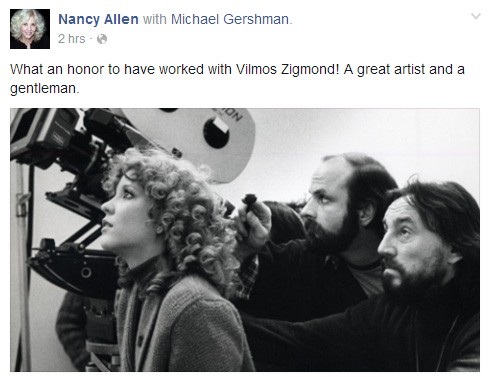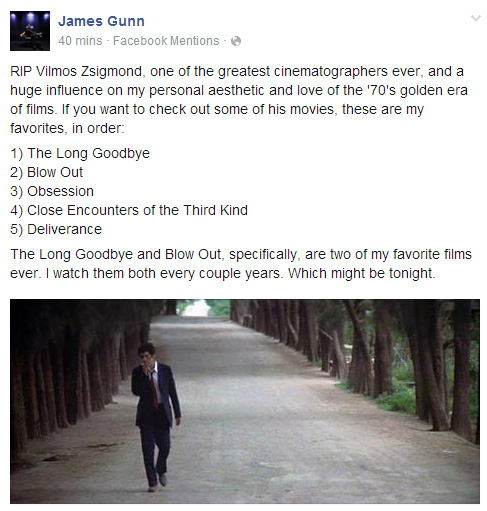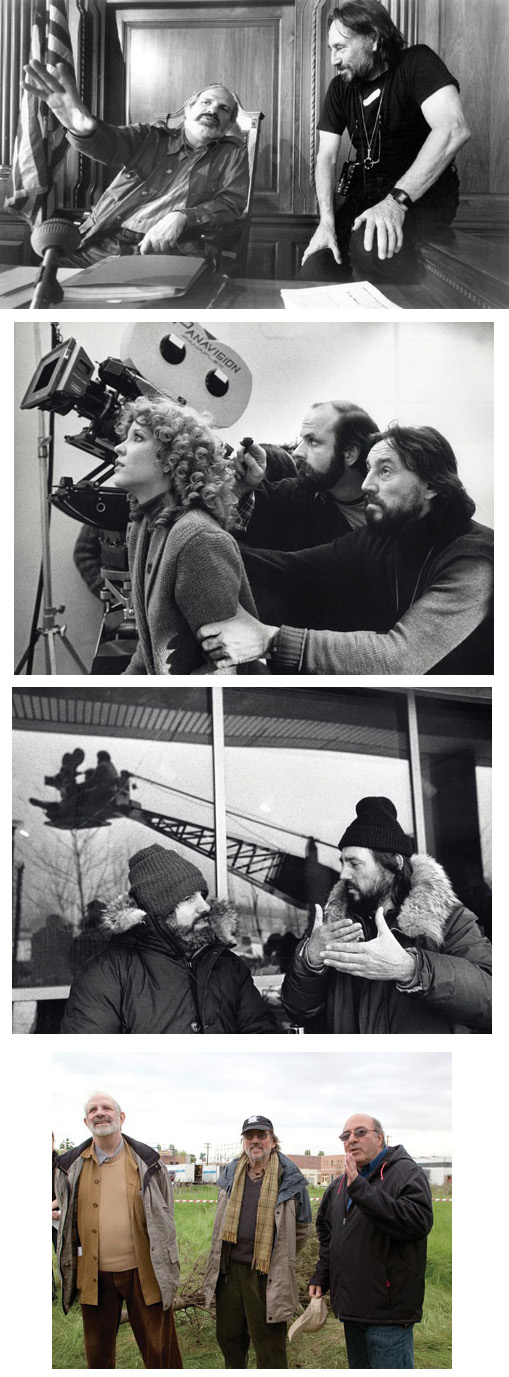DIDN'T FREAK OUT AS MUCH AS OTHER STUDENTS WHEN HE WOULD TOSS THEIR SCRIPTS TO THE FLOOR
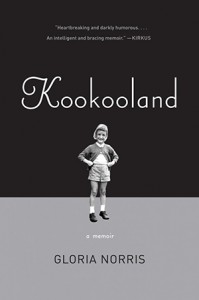 Gloria Norris was a student of Brian De Palma's at Sarah Lawrence College, co-writing the class project, Home Movies, and also working as De Palma's assistant on the film, as a student director. Norris has been promoting her new memoir, KooKooLand, in which she details the traumatic extreme violence of her childhood, centered around her abusive father, Jimmy. In a profile article of Norris from earlier this month, Broadly's Mitchell Sunderland writes, "While a student at Sarah Lawrence College, where she transferred from Bennington, Gloria learned to appreciate her background. There she also connected with the director (and Sarah Lawrence alum) Brian De Palma. The auteur would toss students' scripts aside, sometimes on the floor, Gloria says, and tell kids his treatment would prepare them for Hollywood. While Gloria's peers freaked out over his behavior, she felt she could handle it because Jimmy had toughened her up as a child. A few years later, De Palma recommended Scorsese hire his former student as an assistant on the set of a boxing movie. She scored the job, and it launched her career in Hollywood."
Gloria Norris was a student of Brian De Palma's at Sarah Lawrence College, co-writing the class project, Home Movies, and also working as De Palma's assistant on the film, as a student director. Norris has been promoting her new memoir, KooKooLand, in which she details the traumatic extreme violence of her childhood, centered around her abusive father, Jimmy. In a profile article of Norris from earlier this month, Broadly's Mitchell Sunderland writes, "While a student at Sarah Lawrence College, where she transferred from Bennington, Gloria learned to appreciate her background. There she also connected with the director (and Sarah Lawrence alum) Brian De Palma. The auteur would toss students' scripts aside, sometimes on the floor, Gloria says, and tell kids his treatment would prepare them for Hollywood. While Gloria's peers freaked out over his behavior, she felt she could handle it because Jimmy had toughened her up as a child. A few years later, De Palma recommended Scorsese hire his former student as an assistant on the set of a boxing movie. She scored the job, and it launched her career in Hollywood."[Note: the boxing movie was, of course, Raging Bull, which would likely have started filming very shortly after Home Movies.]
Norris' own Bio states that she was Scorsese's research assistant on Raging Bull, and quotes Richard Schickel's 2010 "Making of Raging Bull" article:
De Niro suggested a period of total isolation and immersion—no phones, no distractions of any kind. They chose the La Samanna resort, on St. Martin, in the Caribbean—a complex of separate villas. They shared one of them and installed a young assistant in another nearby. She was Gloria Norris, a recent Sarah Lawrence graduate who had worked with Scorsese’s pal Brian De Palma on his early picture Home Movies. Better still, her grandfather had been a fight promoter in New England, so she was no stranger to the boxing world. She brought “tons” of books along to help them with research. She remembers De Niro rising early to run along the beach. She remembers him and Scorsese talking out the script scene by scene in the mornings. She remembers Scorsese writing up the new material on yellow legal pads in the afternoons. She remembers “his handwriting was bad, so he’d have to read some of it out to me. It was full of profanity, and he’d get embarrassed saying those words to me.”After that, Norris would retreat to her typewriter, and De Niro and Scorsese would sometimes head out in their Jeep to dinner in one of the several extremely good restaurants on the island.




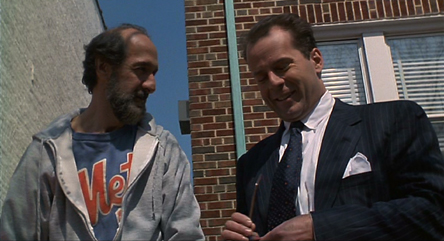 Richard Libertini, who had a brief role as a high school teacher in Brian De Palma's The Bonfire Of The Vanities, died January 7. He was 82. According to the
Richard Libertini, who had a brief role as a high school teacher in Brian De Palma's The Bonfire Of The Vanities, died January 7. He was 82. According to the  David Margulies, who played Bobbi's psychiatrist Dr. Levy in Brian De Palma's Dressed To Kill, passed away Monday afternoon, according to
David Margulies, who played Bobbi's psychiatrist Dr. Levy in Brian De Palma's Dressed To Kill, passed away Monday afternoon, according to 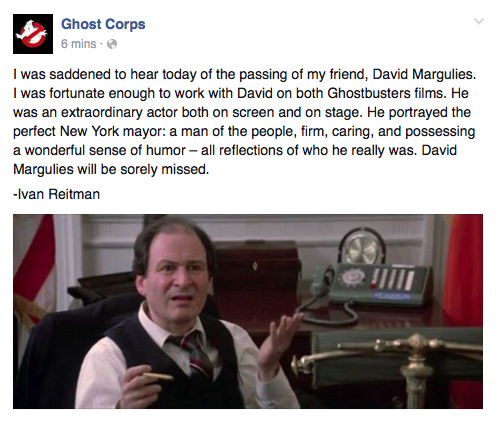

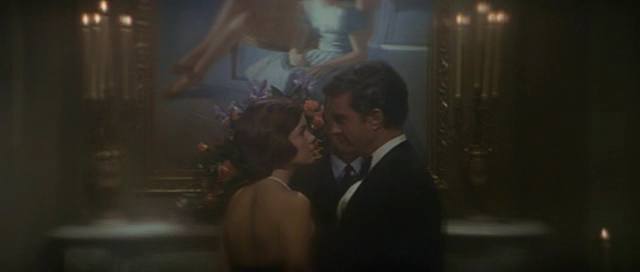
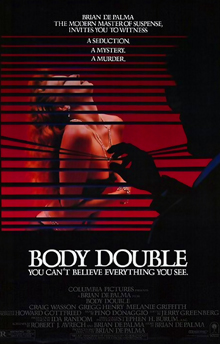

 Vilmos Zsigmond has passed away. He was 85. According to an initial report by
Vilmos Zsigmond has passed away. He was 85. According to an initial report by 